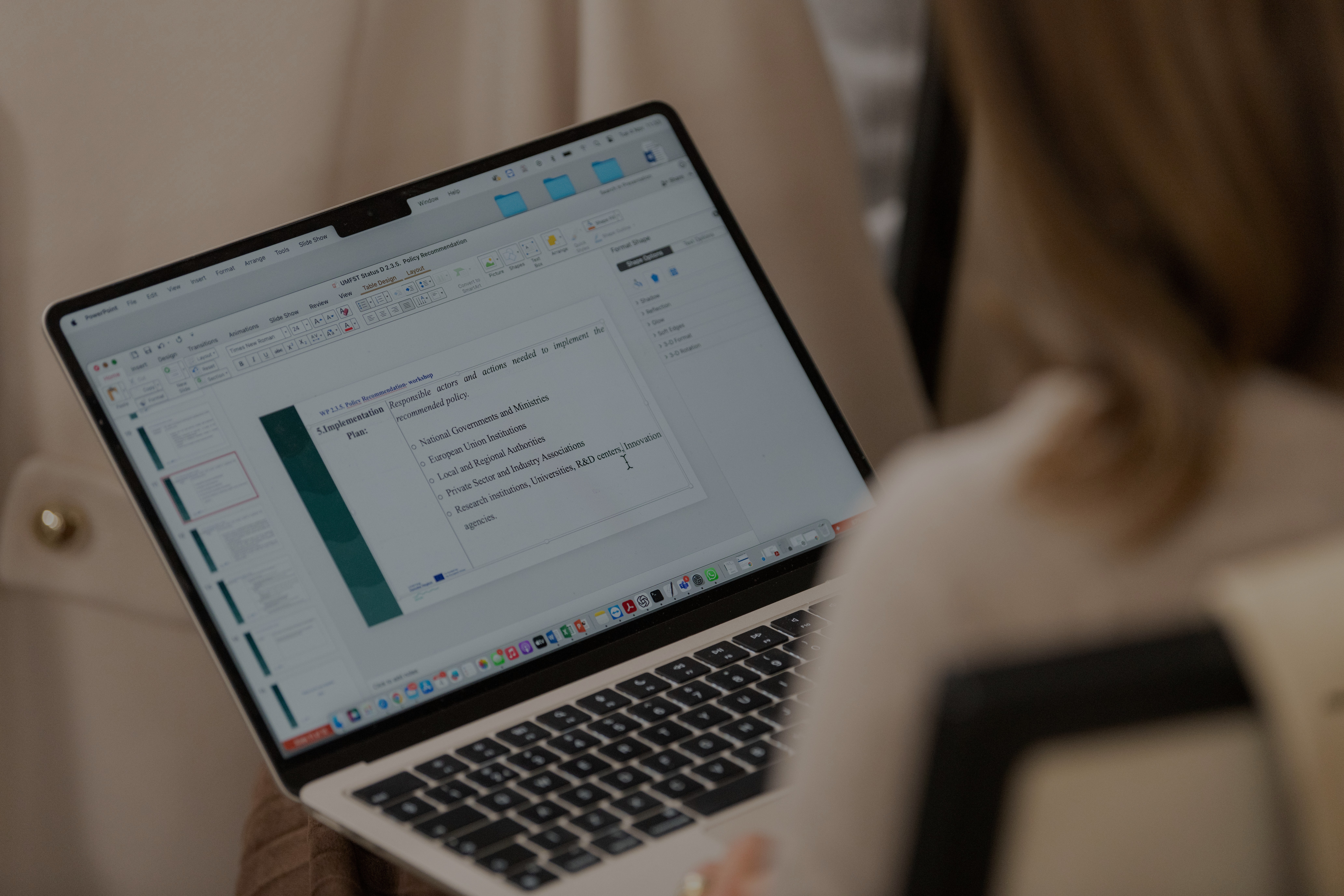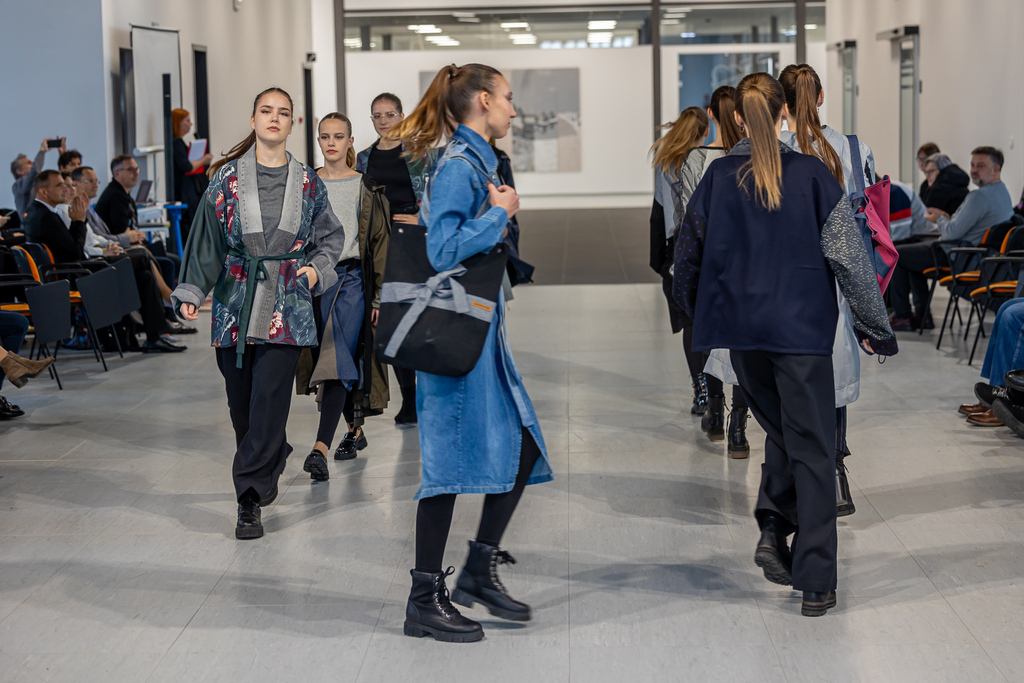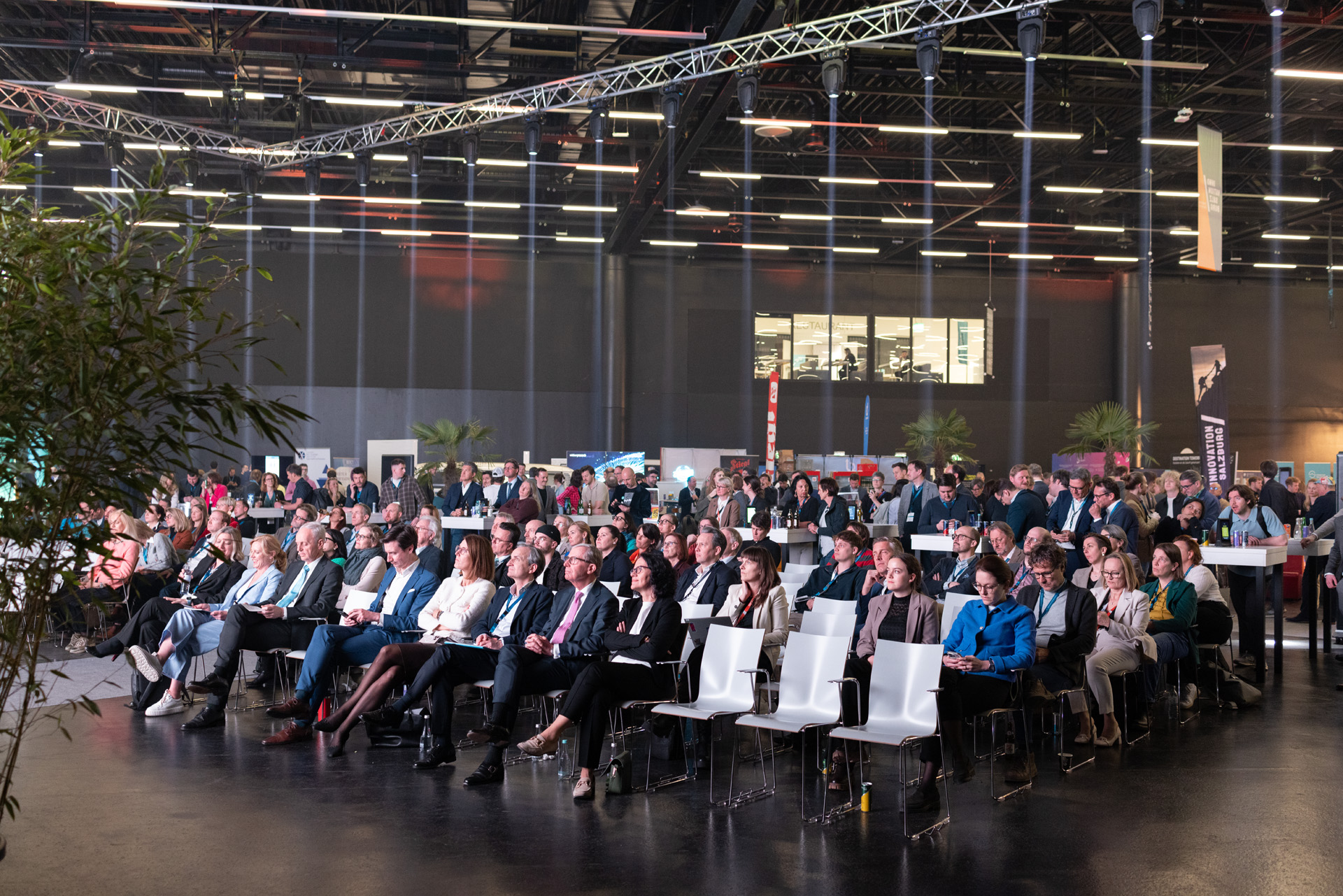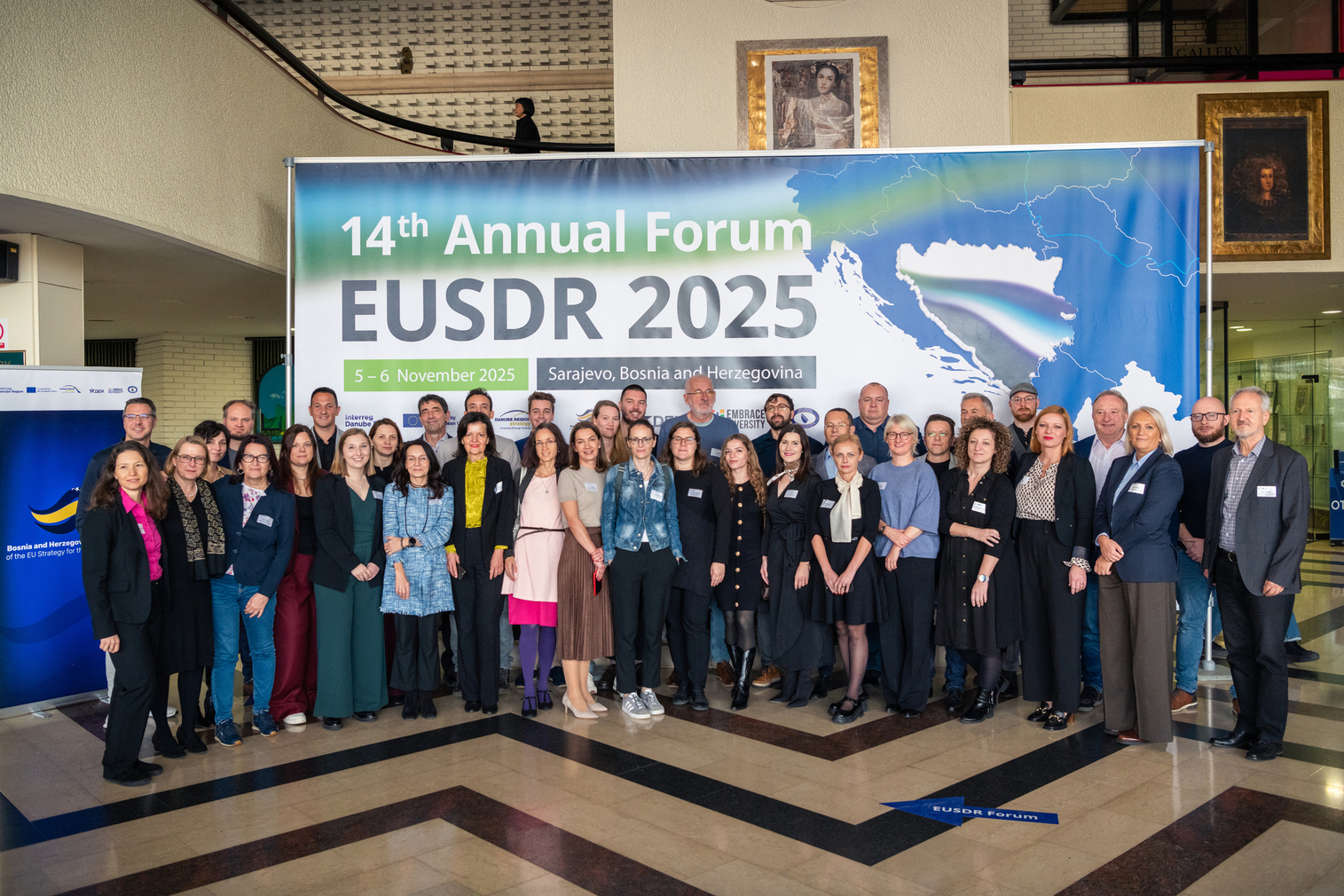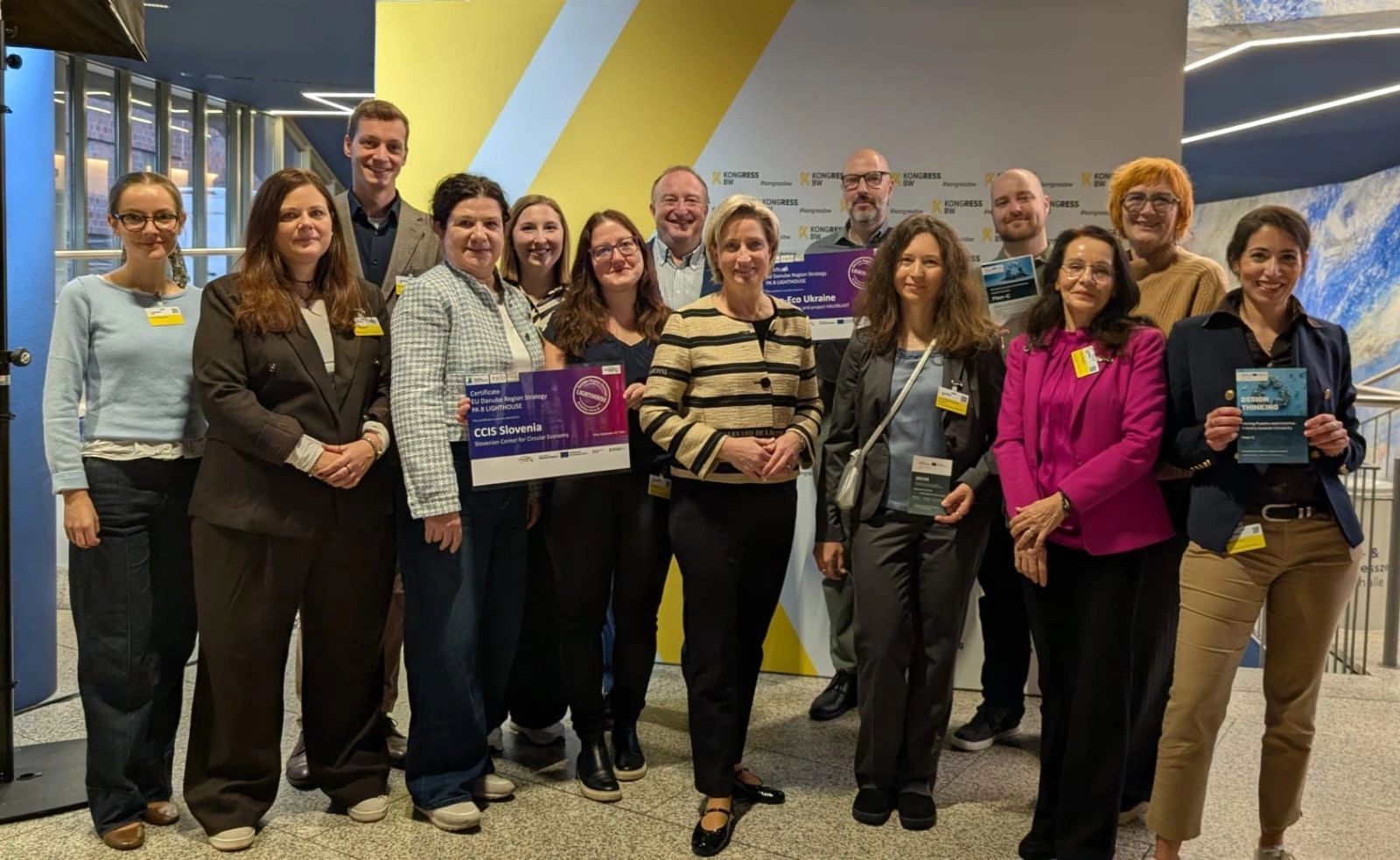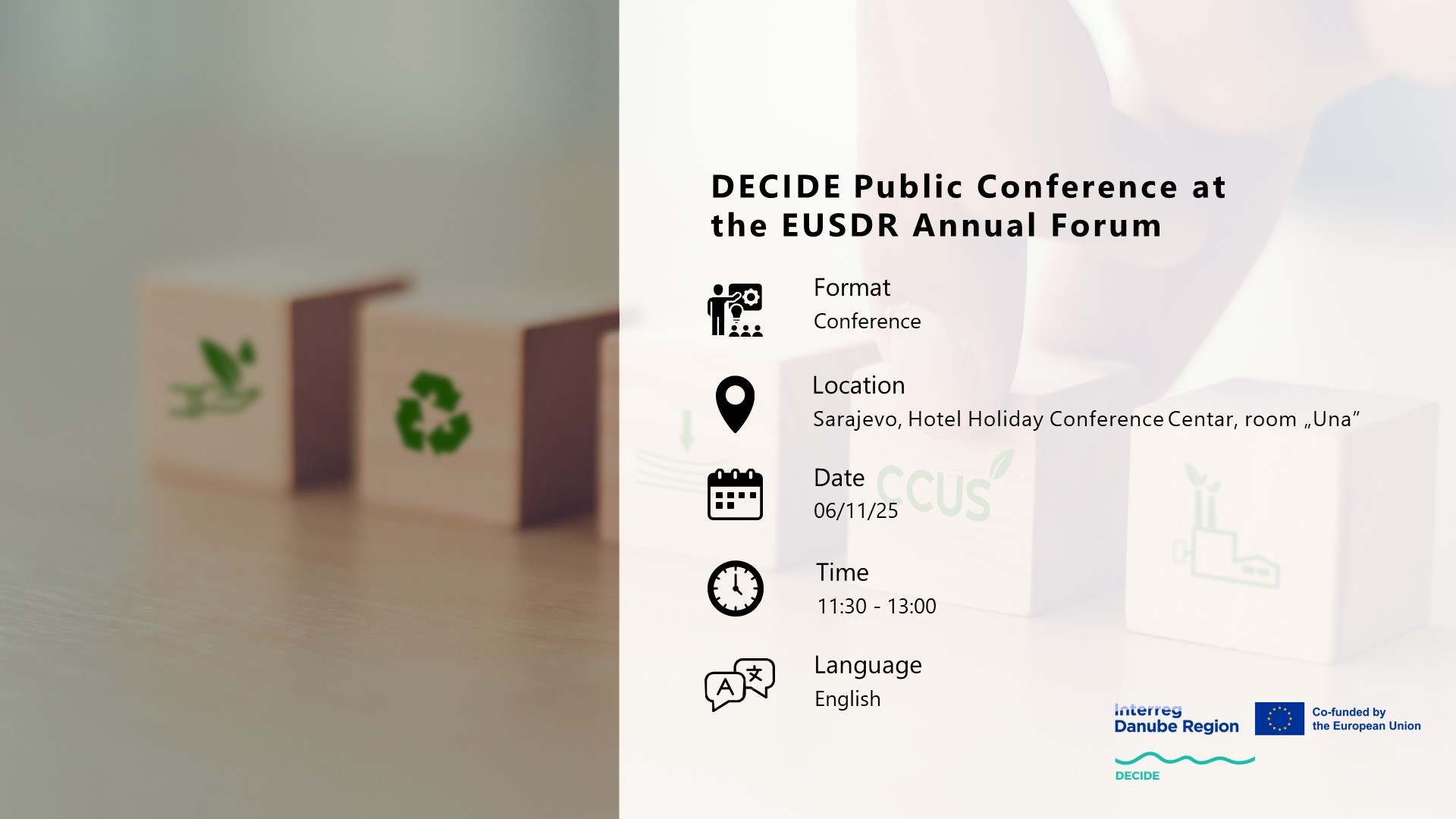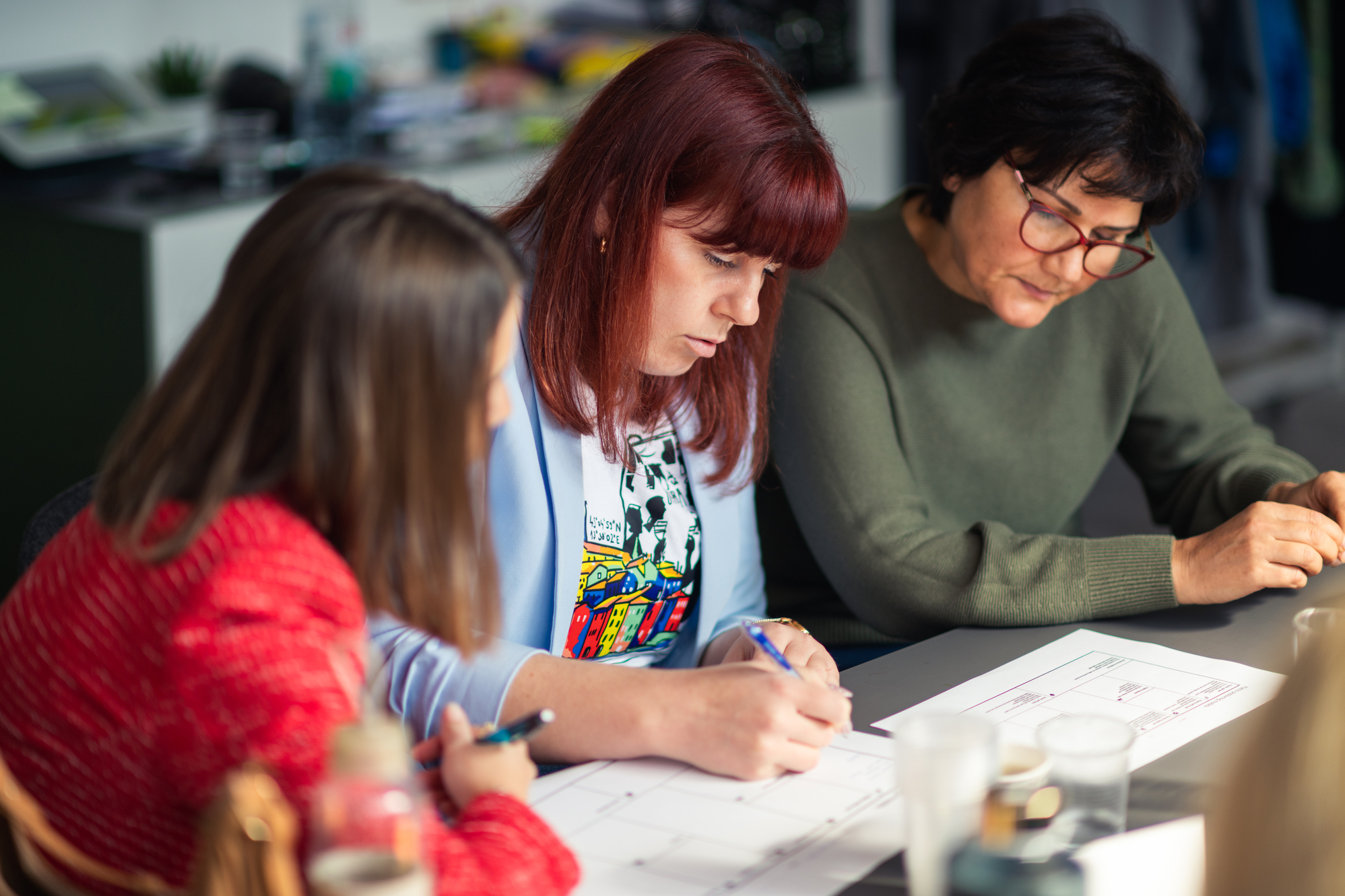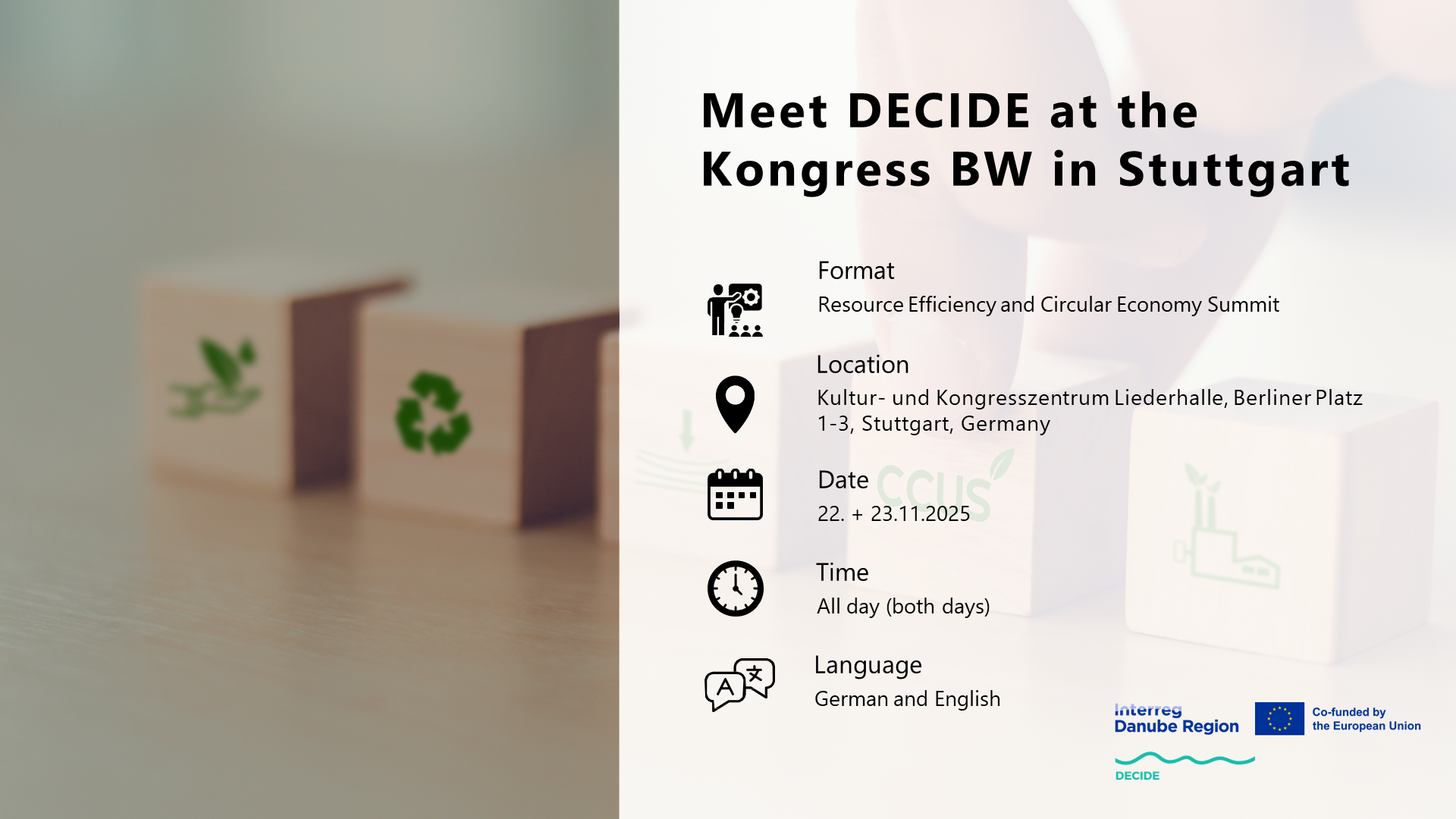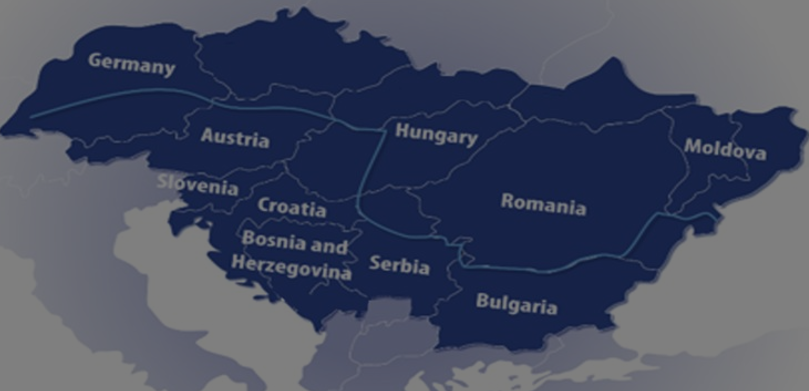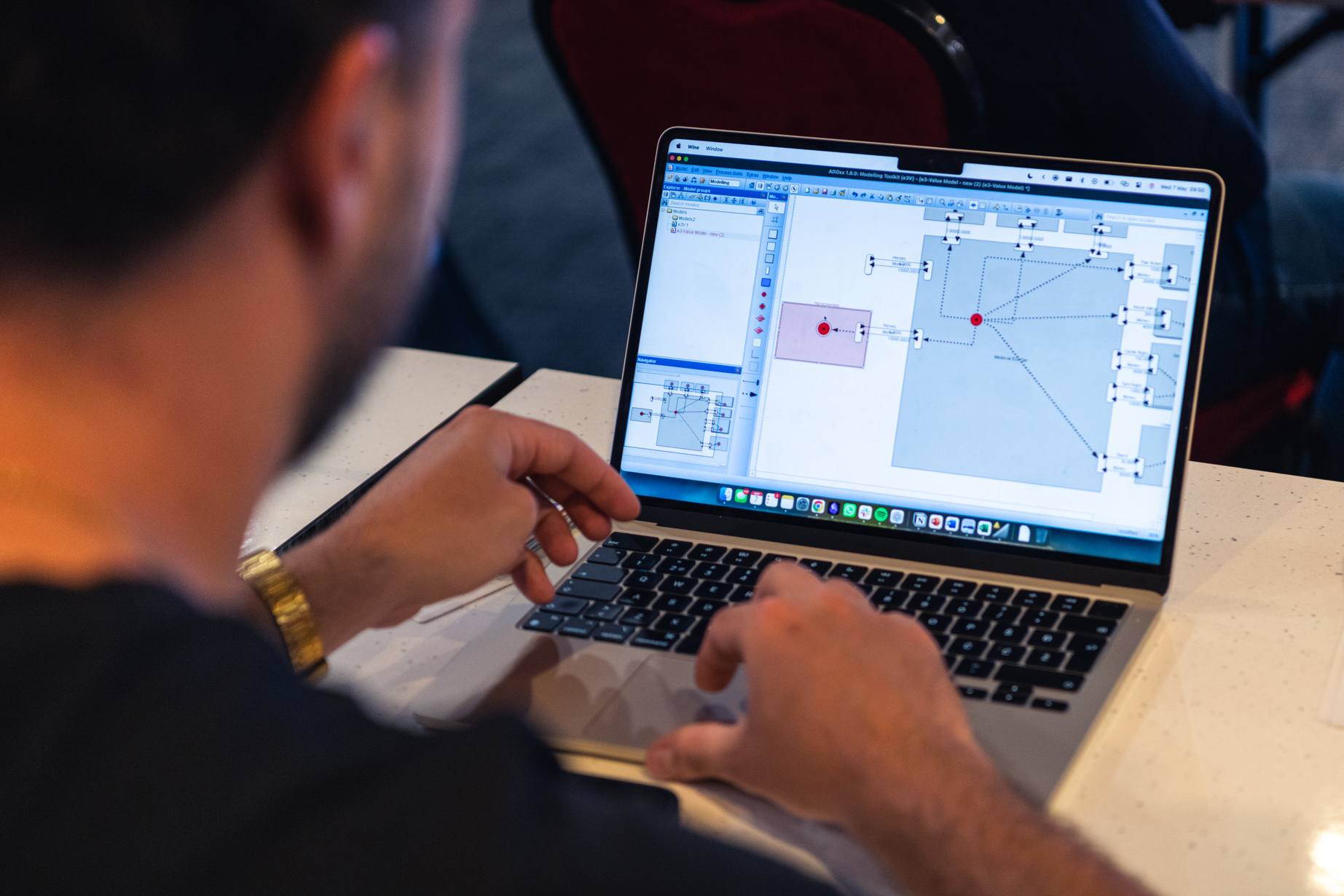BUSINESS MODEL CANVASES AND CASE STUDIES TO DRIVE CIRCULAR ECONOMY PRACTICES
The transition to a circular economy (CE) is critical for fostering sustainability, resource efficiency, and innovation. The DECIDE project aims to provide practical tools and actionable insights for diverse stakeholders, including businesses, policymakers, and academic institutions, to drive sustainability, resource efficiency, and innovation.
Within the framework of the DECIDE project, two connected deliverables ensure detailed insights into real-world examples of best-practice circular economy models in the Danube Region: Business Model Canvases for Best Practice Circular Economy Business Models (Deliverable 2.1.1) and Case Studies for Best Practice Circular Economy Business Models (Deliverable 2.1.2).
Together, these deliverables provide actionable insights and frameworks for stakeholders, demonstrating how diverse sectors and regions can adopt and scale circular practices.
Deliverable 2.1.1 focuses on documenting and visualizing 30 circular economy business models (CEBMs) across 10 countries in the Danube Region. These models span critical sectors such as food, packaging, textiles, second-life batteries, and smart cities. Each business model is analyzed and presented using the Business Model Canvas (BMC) framework (Osterwalder, Pigneur, Smith, Movement, 20101)—a standardized tool that outlines key components such as value propositions, customer segments, revenue streams, key activities, and partnerships.
The purpose of this deliverable is to provide a structured, replicable visualization of successful CEBMs. By using a consistent format, the canvases facilitate cross-sector and cross-border learning. For instance:
Austria's EasyVEGAN model showcases how by-products like brewer's grains can be transformed into profitable vegan food products, illustrating resource optimization in the food sector.
Croatia’s Humana Nova showcases how to implement inclusive employment strategies while recycling textile waste, addressing both environmental and social sustainability goals central to the DECIDE initiative.
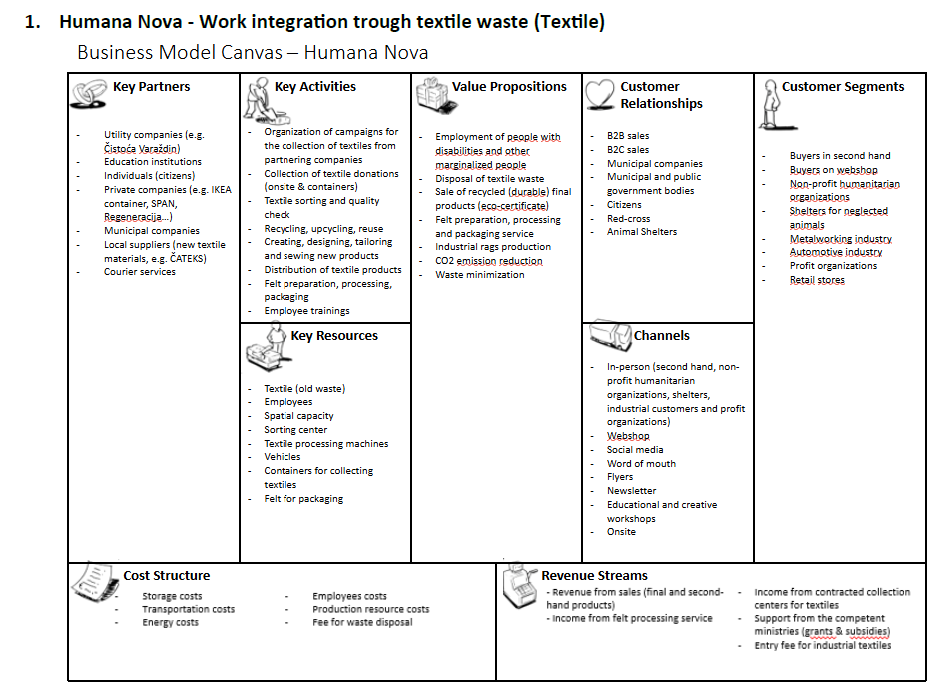
Image 1. - Business Model Canvas: Croatia's Humana Nova „Work integration through textile waste“, Image Source: D 2.1.1 BM Canvases for Best Practice CEBM (developed in the scope of the DECIDE project, part of the D 2.1.1).
The BMC deliverable emphasizes replicability and adaptability, enabling businesses and policymakers to implement circular practices tailored to their regional and sectoral contexts.
Complementing the BMC deliverable, Deliverable 2.1.2 delves into detailed case studies of the same 30 CEBMs. These case studies provide a deeper understanding of how circular economy principles are applied in practice, highlighting challenges, strategies, and outcomes. The analysis is grounded in a 20-dimension framework that examines reduction, reuse, recycling, and remanufacturing while mapping value chain impacts and scalability.
Notable examples include:
Croatia's Humana Nova, which integrates textile recycling with social inclusion, creating jobs for marginalised communities while addressing textile waste.
Romania's Nature Flavour Green, which repurposes surplus fruits and vegetables into dehydrated products, reducing food waste and supporting local economies.
Serbia's Te-To Panonske, which uses biomass for district heating, provides a replicable model for renewable energy integration.
The case studies emphasize the importance of stakeholder collaboration, the role of digital tools in assessing sustainability, and the potential for economic and societal benefits.
Impact and Sustainability
These deliverables represent an important input in the DECIDE Toolbox development process and will be used for other deliverables in the scope of the project, such as D1.4.1 Pilot Documentation and D1.4.2 Pilot Impact Progress Reports. In this way, they represent a significant contribution to initiating actionable change in the Danube Region and beyond. Policymakers can use the findings to refine regulatory frameworks, businesses can integrate circular practices into their operations, and academic institutions can incorporate the insights into curricula to foster the next generation of sustainability leaders.
Furthermore, the deliverables emphasize long-term sustainability by:
Embedding Circular Practices – Encouraging integration into mainstream business strategies and policy frameworks.
Promoting Collaboration – Fostering partnerships between governments, businesses, and academia.
Leveraging Technology – Utilizing digital tools for monitoring and optimizing circular processes.
Alecu Russo State University of Bălți, one of the DECIDE project's valuable partners, has been responsible for Deliverables 2.1.1 and 2.1.2. Alecu Russo State University of Bălți (USARB) is a higher education institution in the Republic of Moldova, accredited institutionally by the Romanian Agency for Quality Assurance in Higher Education. All DECIDE project partners contributed valuable insights to the creation of the deliverables by providing their detailed business cases.
Behind the Scenes
The contribution of all partners of the DECIDE project to the finalization of these deliverables has been invaluable. The work package leader, Nelli Amarfii, shared some thoughts about the process:
“The most challenging aspect was ensuring the harmonization and integration of 30 diverse Circular Economy Business Models (CEBMs) across 10 countries and 5 sectors. Each partner provided models with different levels of detail and varying frameworks, making it complex to standardize the content. To overcome this, we implemented a structured, iterative approach.”
When asked about memorable moments in the process, she said:
“A particularly memorable moment was during the development of Moldova's circular economy models when we collaborated with local stakeholders to tailor solutions for our region. One specific instance was the creation of the bio-plastic model, where we highlighted the production of biodegradable packaging from natural materials like corn starch. It was inspiring to see local businesses actively engaging and contributing innovative ideas, reinforcing the practicality of circular economy principles.”
On the most rewarding part of the project, she reflected:
“The most rewarding aspect was seeing the practical impact of our work. Creating tools that stakeholders—whether businesses, policymakers, or academic institutions—can use to implement circular economy practices was deeply fulfilling. Watching the transition from theoretical frameworks to real-world applications, such as Romania's Nature Flavour Green or Croatia's Humana Nova, reinforced the value of collaborative efforts in driving sustainability.”
Her thoughts on circular economy practices:
“Working on these deliverables significantly broadened my perspective on the versatility and scalability of circular economy practices. The project highlighted how diverse sectors, from food to textiles, can adopt tailored circular models while still addressing shared sustainability goals. Additionally, the collaborative nature of the project underscored the importance of cross-border and cross-sector partnerships, proving that the exchange of ideas and best practices is crucial for fostering innovation and driving systemic change.”
The Business Model Canvases for Best Practice Circular Economy Business Models and the Case Studies for Best Practice Circular Economy Business Models are more than just deliverables; they are catalysts for transformation. By providing both a framework for understanding and practical examples for action, they empower stakeholders to accelerate the transition to a sustainable and circular economy. Together, these deliverables demonstrate the power of combining structured analysis with real-world application, paving the way for a resilient and sustainable future.
To learn more about the DECIDE project and stay updated on opportunities to get involved and access the DECIDE toolbox, follow us on:
References:
[1] A. Osterwalder, Y. Pigneur, A. Smith, and T. Movement, Business Model Generation, 1st ed., vol. 30, no. 5377. Hoboken, New Jersey: John Wiley & Sons, 2010. doi: 10.1523/JNEUROSCI.0307-10.2010.
News & Events
Read the most recent updates and explore the upcoming events.

